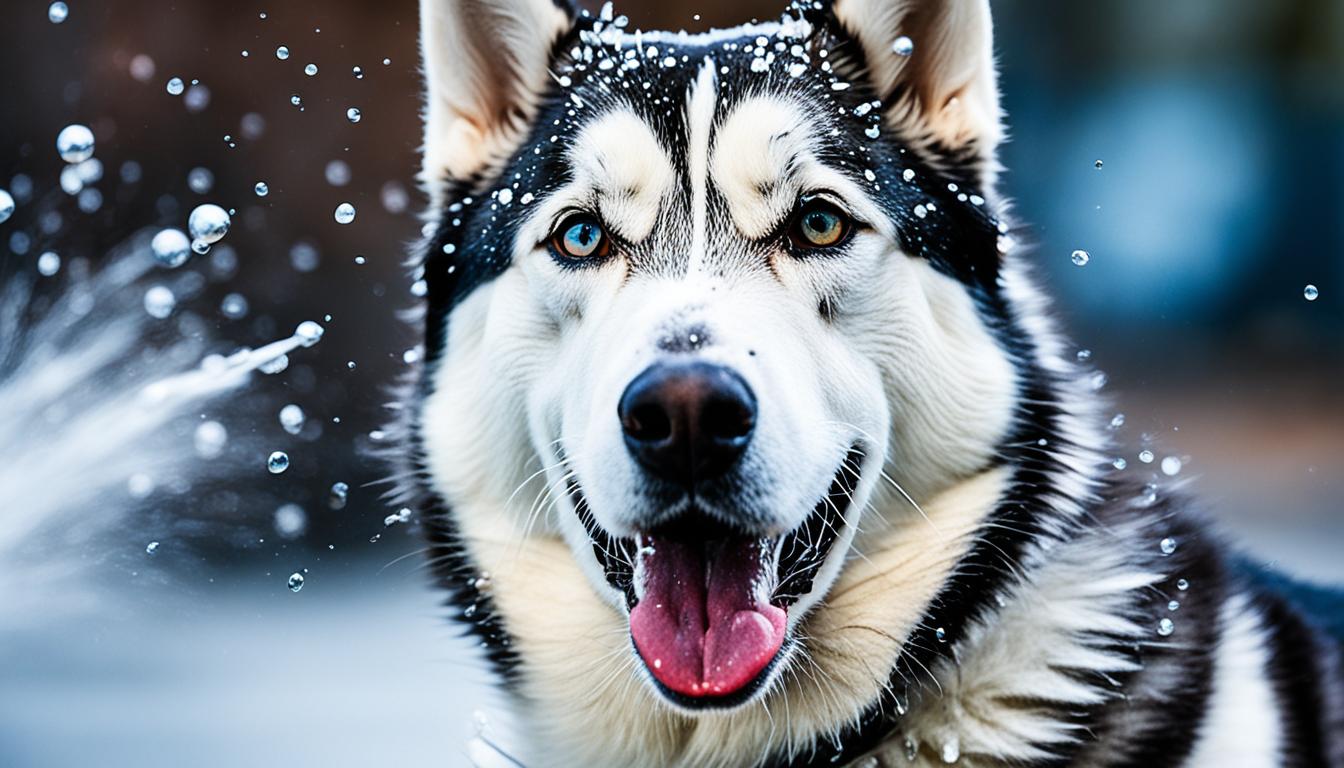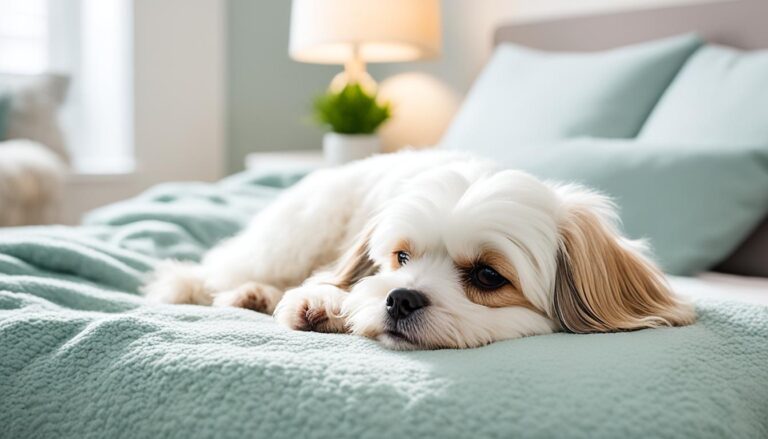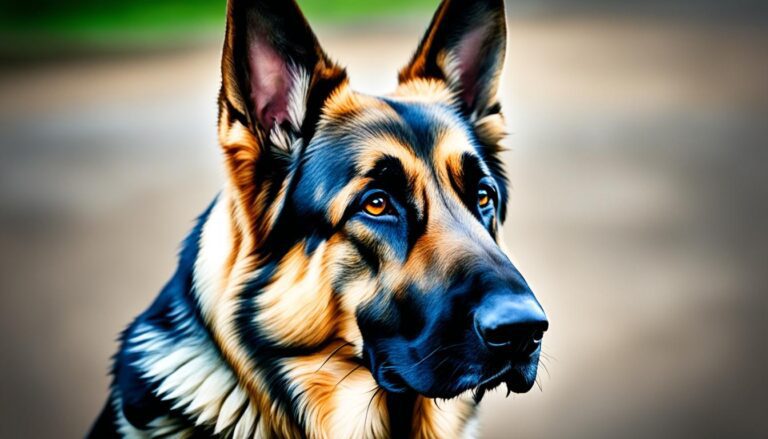Siberian Husky care – Care requirements for Siberian Huskies.
Siberian Huskies are well-loved for their unique beauty, smartness, and high spirit. Yet, they need a lot of your time and hard work. This guide will help you understand what Siberian Husky care includes. We’ll talk about grooming, exercise needs, and the importance of training.
Siberian Huskies have a deep history as working sled dogs. They are way more than just a pretty face. To care for them right, you’d need to know certain things that might surprise you. This guide is here to share the secrets to keep these amazing dogs in tip-top shape.
Key Takeaways
- Siberian Huskies require a significant time and effort commitment for proper care
- Grooming, exercise, and training are essential aspects of caring for a Siberian Husky
- Siberian Huskies are known for their heavy shedding, especially during seasonal changes
- Providing mental stimulation and daily exercise is crucial to prevent destructive behavior
- Siberian Huskies have a rich history as endurance sled dogs and are considered an ancient breed
Understanding the Siberian Husky Breed
In 1908, Russian fur trader William Goosak introduced Siberian Huskies to the U.S. He brought them to Nome, Alaska. At first, Alaskans didn’t think much of this breed. But, over the next hundred years, Siberian Huskies won the hearts of many in the U.S.
Origins and History
More than 3,000 years ago, the Chukchi people of Northeast Asia developed the Siberian Husky. These dogs were bred for pulling sleds. The American Kennel Club recognized the breed in 1930. This marked their importance both as working and family dogs in the U.S.
Distinctive Physical Traits
Siberian Huskies are medium-sized, typically standing 20-23.5 inches tall and weighing up to 60 pounds. They are famous for their double coat. This coat helps them stay warm in cold weather. They shed a lot, especially when seasons change.
Females are generally smaller than males, standing 20 to 22 inches tall. Males are usually taller by a couple of inches. Females also weigh less, around 35 to 50 pounds, than males who can weigh up to 60 pounds.
Unique Personality and Temperament
Siberian Huskies are lively, smart, and love being around their family. They can be a bit willful and love to chat. Training and socialization are vital from puppyhood. This helps direct their eagerness and keep them out of trouble.
Huskies, as noted by the Siberian Husky Club of America, have a strong hunting drive and love exploring. They may try to escape sometimes. This is because they are deeply attached to their family and see a large area as their home.
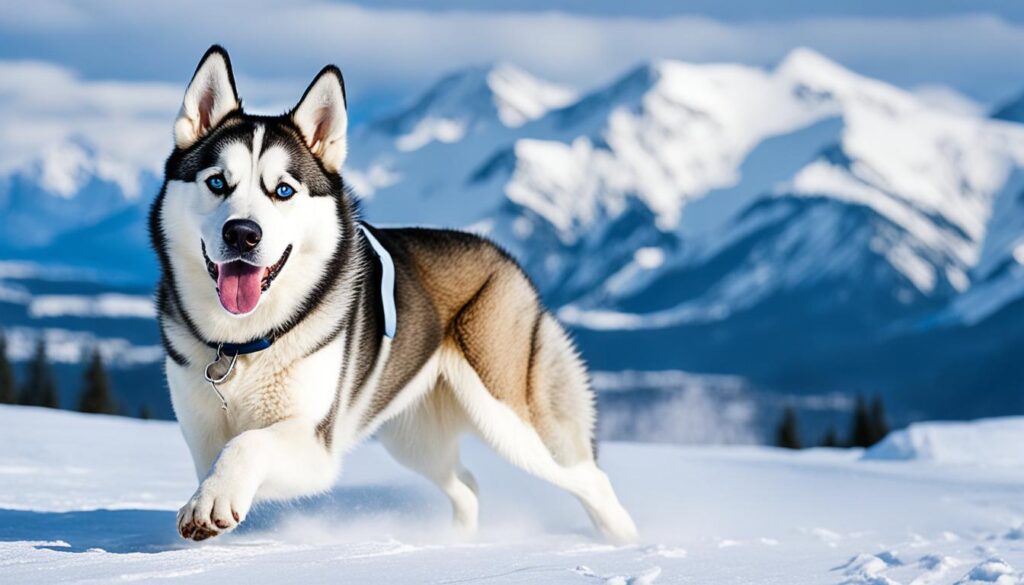
Siberian Husky Care – Care Requirements for Siberian Huskies
Exercise and Activity Needs
Siberian Huskies love being active. They need at least 40 minutes of exercise every day. This can include long walks or runs.
They are great at dog sports like agility and sledding. For active families, Huskies are perfect companions.
Grooming and Coat Care
Huskies have a thick double coat that sheds a lot. They need regular brushing to keep their coat healthy. This also helps keep shedding under control.
Bathing is not always necessary since Huskies are usually not smelly. Remember, never shave a Husky. Their coat keeps them warm and cool.
Training and Socialization
Huskies are smart but can be stubborn, which makes them hard to train. Use positive, reward-based training early on. This helps with behaviors like pulling on the leash.
It’s important to introduce your Husky to many different situations and people when they are young. This makes sure they become social and well-behaved adults.
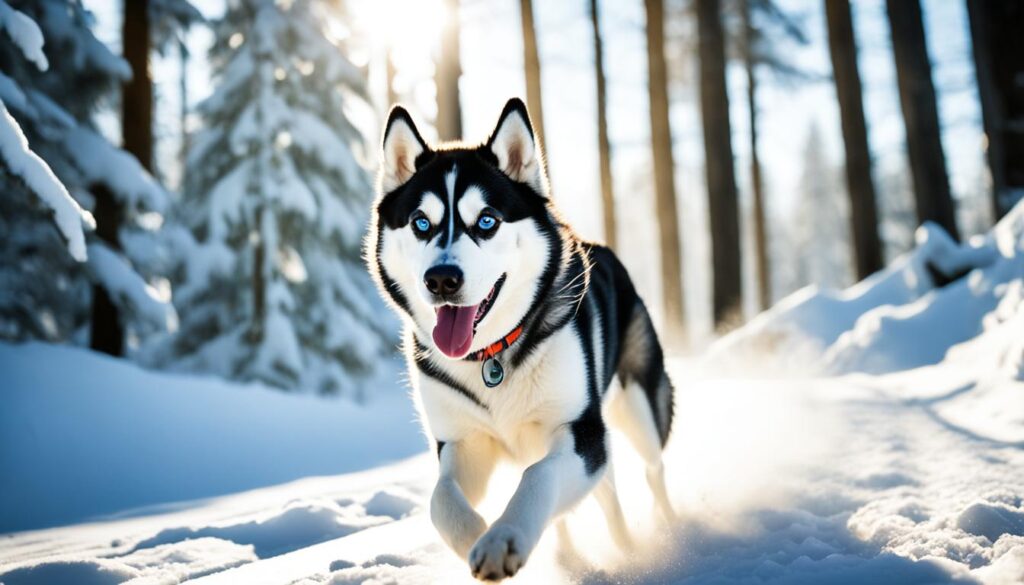
Nutrition and Feeding
Veterinarians suggest a top-notch dog food for Siberian Huskies. Look for one that’s AAFCO-approved. Huskies are quite active, needing a diet rich in protein and healthy fats. They also benefit from supplements like glucosamine. Always stick to the recommended feeding amounts on the food bag. Also, chat with a vet to be sure your Husky is getting every nutrient they need.
Balanced Diet for Huskies
Siberian Huskies and Malamutes thrive on diets high in protein and fat but low in carbs. Their food should contain over 30% protein and about 20% fat. They also need around 30% carb from complex sources. The right amount of fats is key for their energy and overall health. And limiting carbs helps keep them at a healthy weight. Choose quality protein from chicken, fish, or lamb for your Husky.
Feeding Schedule and Portion Control
For Huskies, it’s better to feed them several small meals a day. This is instead of leaving food out all day or free-feeding. Doing so keeps their metabolism steady and helps prevent obesity. Puppies need to eat more often, perhaps 3-4 meals daily. As Huskies grow, you can cut down to feeding them 2-3 times a day. Make sure to adjust the portion sizes based on their size, age, and how much exercise they get. This keeps your Husky in top shape.
Health Concerns and Prevention
Siberian Huskies are usually healthy but some might have health issues due to genetics. These include hip dysplasia and eye problems like cataracts and PRA. Hypothyroidism is also something to watch out for in these dogs. By getting regular check-ups and tests, we can keep our Huskies healthy.
Hip dysplasia is often seen in Huskies and can make them limp. PRA mostly affects males, causing night blindness and then loss of day vision. Keep an eye out for cataracts and signs of hypothyroidism, like gaining weight and losing hair.
Working closely with veterinarians helps tackle these issues early. With the right diagnosis and care, our Huskies can have long, happy lives. Keeping them healthy means they can stay our lively, loving pets for many years.
FAQ
What makes Siberian Huskies a popular dog breed?
When did Siberian Huskies make their debut in the United States?
What are the physical characteristics of Siberian Huskies?
What are the personality traits and temperament of Siberian Huskies?
How much exercise do Siberian Huskies require?
How much grooming do Siberian Huskies need?
How challenging are Siberian Huskies to train?
What are the nutritional requirements for Siberian Huskies?
What health concerns are Siberian Huskies prone to?
Source Links
- https://www.thefarmersdog.com/digest/the-husky-care-guide-food-exercise-personality-and-more/
- https://www.petmd.com/dog/breeds/siberian-husky
- https://www.pawlicy.com/blog/siberian-husky-dog-breed/
- https://foreverhusky.org/husky-101/what-should-i-feed-my-husky/
- https://www.huskyrescue.org.za/siberian-husky-diet/
- https://www.snowdog.guru/snow-dog-appropriate-diet/
- https://wpvet.com/pdfs/dogbreedinfo/winterparkveterinaryhospitalsiberianhusky.pdf

